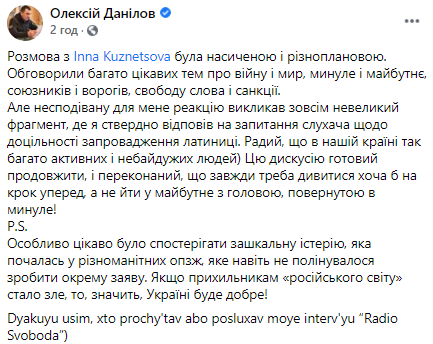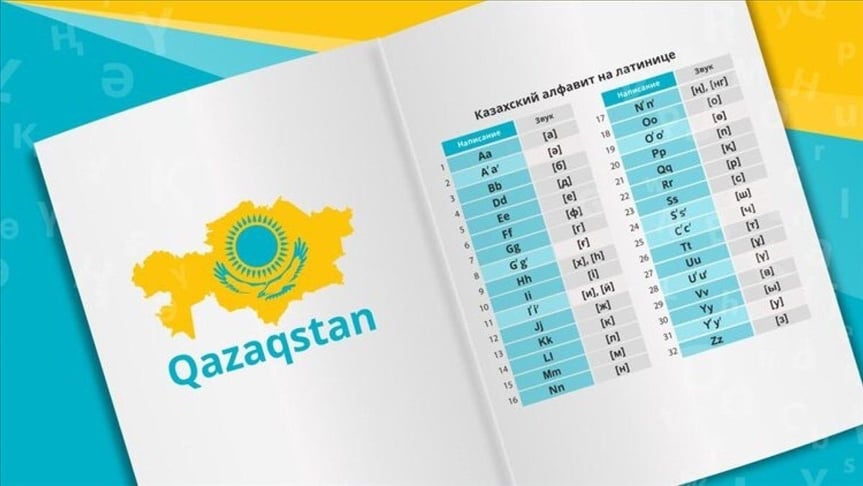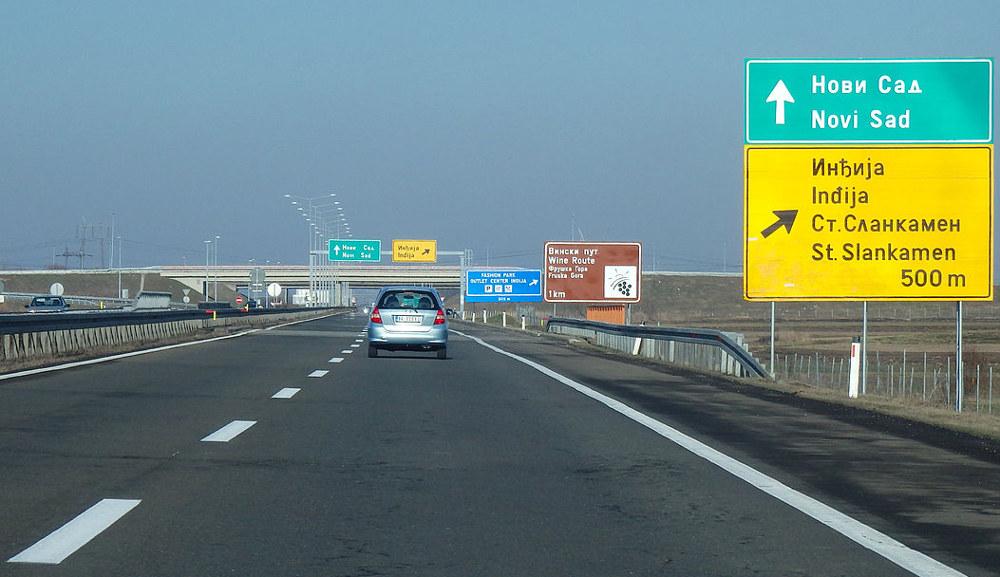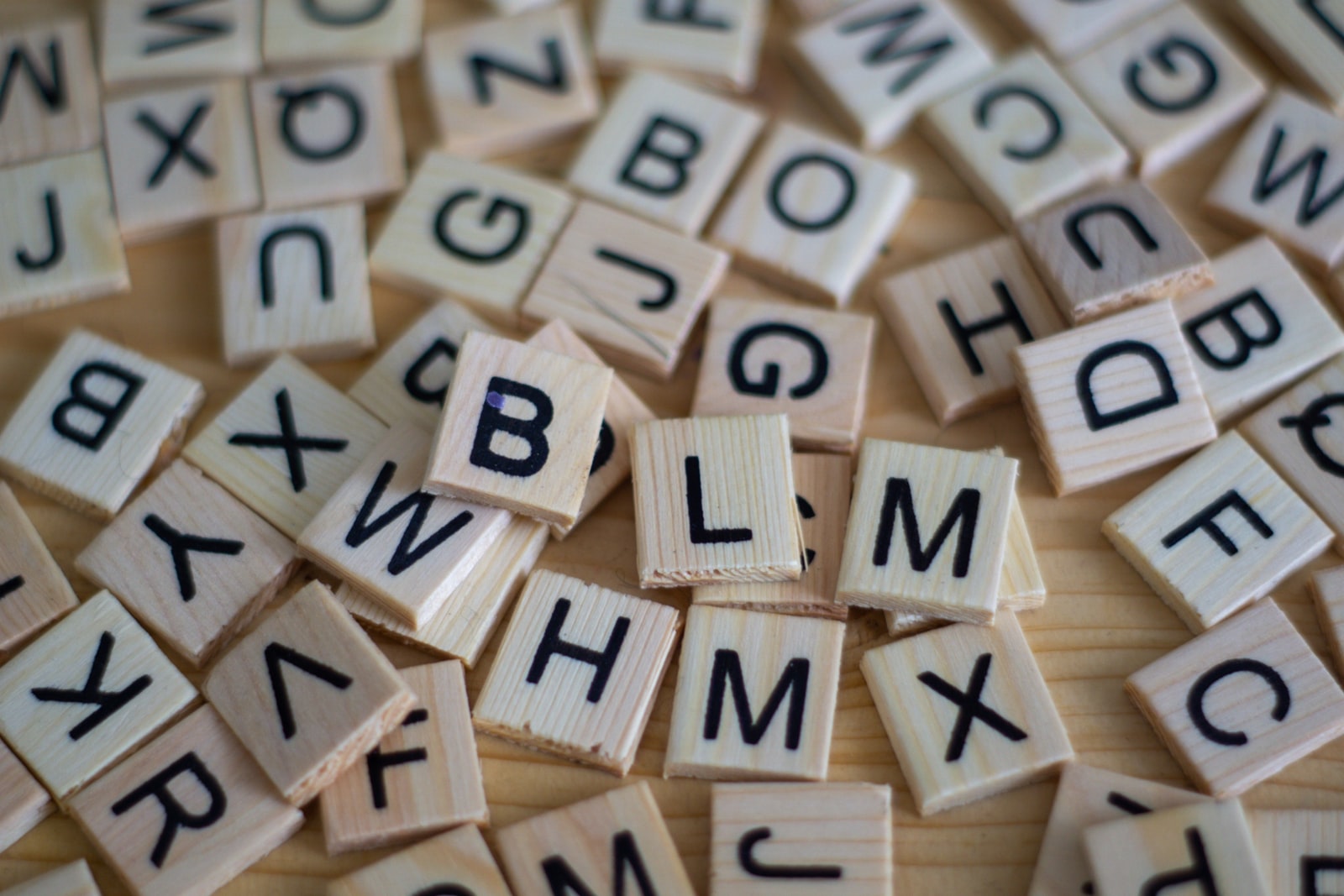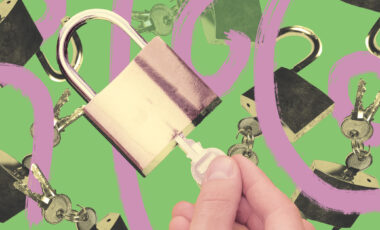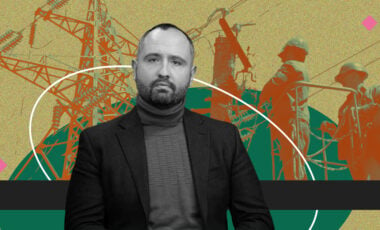Decision to switch to Latin: how much will it cost Ukraine and how does it work in other countries?
Is our country ready for such changes and why do it?

Ukraine needs to switch to the use of the Latin alphabet. The Secretary of the National Security and Defense Council (NSDC) of Ukraine Oleksii Danilov expressed this opinion. "I think it will be one of the fundamental things. We need to get rid of the Cyrillic alphabet and switch to Latin," he told Radio Svoboda. Two days later, the secretary posted on Facebook that he was "interested in watching the outrageous hysteria that arose from his statement about introducing Latin in Ukraine." He supplemented it with a quote:
"Dyakuyu usim, xto prochy'tav abo posluxav moye interv'yu "Radio Svoboda")"
The web immediately noticed that the secretary made 3 mistakes in one sentence at once. The spelling doesn't meet the officially approved standard in Ukraine:
- "prochy'tav" should be written without an apostrophe
- in the words "xto" and "posluxav," instead of the Latin "x," he should've used a combination of letters, "kh"
- later the official changed the sentence, leaving the old mistake in the word "prochy'tav" and made new mistakes in the words "khto" and "poslukhav"; instead of "kh," he used only "h"
"Dyakuyu usim, khto prochytav abo poslukhav moye interv'yu 'Radio Svoboda'"
This is exactly what transliteration should look like, according to a resolution approved by the Cabinet of Ministers in 2010.
What is the problem?
The question of the transliteration system of the Ukrainian alphabet arose in the 90s when the transfer was unsystematic. It was carried out either according to the rules of spelling of a particular language, or according to the system of Jireček, or according to the norms of ISO 9. The Internet often uses a slightly modified system of Fedkovych. However, discussions on the rules for the transmission of Ukrainian words in Latin continue even after the rules were established 11 years ago, despite the approved standard. At the same time, all official documents continue to be translated per the Cabinet of Ministers Resolution of January 27, 2010.
Institute of Linguistics is against it: "It will not shorten Ukraine's path to Europe"
The issue of the Ukrainian language transitioning to Latin is not new. Talks about this have been going on for a long time; Thus, in 2019, a wave of controversy was caused by the proposal to discuss such an opportunity by then Foreign Minister Pavel Klimkin on his Facebook page.
The director of the Institute, Professor Bohdan Azhniuk, believes that Ukrainians are not ready to switch to Latin, as it's "a rejection of Ukraine's long-standing cultural and symbolic heritage, which will shock the entire nation. Authorities should consult professional linguists before accepting such important decisions." The scholar declared it to the News.LIVE, commenting on the idea of the secretary of the National Security and Defense Council Oleksii Danilov to pass from Cyrillic to Latin:
"It's an unjustified proposal that is made to reduce Ukraine's path to Europe by changing the schedule. It looks simple and will be an enormous shock for the entire nation in psychological, technological, and cultural terms," said the scholar.
According to him, such a decision will abolish the Ukrainian spelling and will serve as a rejection of Ukraine's long-standing cultural and symbolic heritage, as the graphic system of language is not packaging for goods, but part of the sign system of the whole nation:
"We received the lettering together with writing, book memorabilia, with such works as 'Nestor's Chronicle,' 'The Tale of Igor's Campaign,'" the professor specified. "It's an inadequate price for the rather illusory notion that it's because of the change in the graphic system that we'll find ourselves in Europe," Azhniuk stressed.
He also added that many peoples of the world use writing systems other than Latin: Chinese, Japanese, Israelis, Armenians, Georgians, and stressed that it would be good for officials to contact professional linguists.
Pavlo Hrytsenko, Director of the Institute of the Ukrainian Language of the National Academy of Sciences of Ukraine, expressed a similar opinion and stated on Ukraine 24 TV channel that the transition to Latin would be nonsense for Ukraine:
"The Cyrillic alphabet in Ukraine has existed at least sporadically, that is, partially, since the ninth century, and since the tenth century the mass distribution of the Cyrillic book began, and this is why our state was established. Because with a Cyrillic book, the Kyiv Prince sent his governors (then they said mayors) to different cities," said the scholar.
When asked why it makes no sense to use both writing formats in Ukraine, as, for example, in Serbia, Hrytsenko answered that it would be nonsense. According to him, such parallelism will have a detrimental effect on the traditions of Ukraine.
In 2031, Kazakhstan will switch to Latin. Why?
Until 1920, Kazakhs used Arabic elm in writing. In 1928, the USSR approved a single alphabet for the Turkic languages based on Latin, but in 1940 it was still replaced by Cyrillic. The Kazakh alphabet has existed in this form for 78 years. In 2017, Kazakhstan announced the transition to Latin. The country's authorities plan to make a gradual transition to Latin from 2023 to 2031. This decision was made this year following a meeting of the national commission for the translation of the Kazakh alphabet into Latin.
The advanced alphabet includes 31 characters of the basic system of the Latin alphabet, fully covers 28 sounds of the Kazakh language. Specific sounds of the Kazakh language are marked by diacritical symbols, umlaut, macron, saddle, Brevis, which are often used in international practice.
Askar Mamin, the Prime Minister of Kazakhstan, explained that it was an improved version of the alphabet, which would give a new impetus to the development of the Kazakh language and contribute to its modernization under modern trends. It's quite vague wording, under which political experts suggest a departure from the influence of Russia; linguists say that the introduction of Latin will help restore the natural sounds of the Kazakh language, which was strongly influenced by Russian in Soviet times, and the Kazakh government connects it with the introduction of modern technologies and communications. Former President and now Chairperson of the Security Council of Kazakhstan, Nursultan Nazarbayev, holds a view similar to that of linguists. He spoke about the transition to Latin in 2006, and said in 2017 that the Cyrillic alphabet "distorted" the Kazakh language:
"There's no 'щ,' 'ю,' 'я,' 'ь' in the Kazakh language. Using these letters, we distort the Kazakh language, so [with the introduction of Latin] we come to the basics," he said.
Askar Mamin also stated the need for "extensive outreach work among the population on the improved Kazakh alphabet based on the Latin script," so, in the future, the country would need to conduct extensive preparatory work for the gradual transition to the Latin script of the Kazakh language.
A similar situation to Kazakhstan has developed in Uzbekistan. There, the transition began earlier and its full completion is planned in two years, in 2023.
What will Ukraine face if it wants to switch to Latin?
This question is easy to answer, again referring to the example of Kazakhstan. First, we're facing heated controversies between politicians and linguists; it's obvious from the controversy that has erupted now. Second, we face great difficulties that have already arisen in Kazakhstan.
Kazakh critics and scholars warn that it will be difficult for older people to get used to Latin graphics, which could lead to a generation gap. Another danger is that future generations will not be able to turn to many scientific and other works written in Cyrillic; most books simply can't be republished in Latin. A potential problem is the declining interest of young people in reading; at first, it will be difficult to readjust to the new alphabet and reading will take much more time. They say that young people may simply stop reading. The probability of growing corruption is also a big risk, as it will be necessary to spend rather big sums from the state budget on the transition.
The transition process will be very costly. According to the data published on the website of the Government of Kazakhstan, 192 thousand teachers will have to be "retrained" in the next seven years. This pleasure will cost Astana a terrible figure: 11 555 768 119 tenges. In hryvnias, it is 735 million. Additional funds will be needed to translate school textbooks, and about 130 million more hryvnias will be needed to republish school textbooks. It's important to note that the population of Kazakhstan is almost 2 times smaller than Ukrainians; the 2019 census is 18 million citizens, which means that the Ukrainian amount will have to be multiplied by the same factor.
How are two alphabets at once used in Serbia?
One of Ukraine's options of switching to Latin is to preserve both alphabets. This was done in the Serbian language. Serbian is one of the Slavic languages, as is Ukrainian. When Yugoslavia still existed, Cyrillic and Latin were taught in parallel in schools in Serbia and Montenegro, but at the household level in Serbia, the former still prevailed. Two alphabets are used as writing: the Serbian Cyrillic alphabet (vukovitsa) and Gaj's Latin alphabet. Meanwhile, the Cyrillic alphabet is the only official script, this status was enshrined in law in 2006. It should be used by all government agencies, educational institutions, and the media; company names, information about their activities, products, as well as official invoices and checks, must be in Cyrillic.
Outside of official use, Latin is used quite often. Despite the official status of the Cyrillic alphabet, Latin is actively used in the public sphere and the political environment. Some leading Serbian media and several political parties use Latin in their publications, titles, slogans, and campaign materials. Finally, the total transition to Latin graphics is observed in the field of services: in the vast majority of shops, banks, restaurants, bars, and cinemas, customers will have to deal exclusively with the Gaj's Latin alphabet (or at least with English). Serbs correspond with each other in Latin.
The fashion for Latin is also among the supporters of the western development of the country of Serbian youth, which together raises concerns in the Ministry of Culture of Serbia. Authorities are actively saying that Cyrillic is an integral part of the nation's cultural heritage and identity, and its gradual disappearance provoked the Ministry to set up a special working group in 2017, whose experts have developed amendments to existing language norms that say Latin can serve only as an additional alphabet. The new amendments even provide for fines for those who don't follow the language rules: from €40 to €800 for individuals and from €4,000 to €8,000 for legal entities. However, the amendments were never adopted.
Analysts differ on what will happen next: some argue that globalization will come into its own, and the Cyrillic alphabet, most likely, will cease to exist in Serbia, while others believe that the Cyrillic alphabet is too early to bury and, having lived a thousand years, it can easily to transfer also present perturbations.
In any case, the situation in Ukraine is somewhat different: there's no habit of using the Latin alphabet either in everyday life or in the official context.
Will Ukraine switch to Latin?
The controversies that unfolded two years ago over Klimkin's statements and now over Danilov's are far from the first. History speaks of much louder precedents. Ukrainian lands have almost switched to the Latin alphabet at least three times. For the first time, it was in 1834 on the initiative of the Galician linguist and ethnographer Joseph Lozynsky. Then the attempt led to an "alphabetic war" that lasted two decades, and as a result, Lozynsky's idea was rejected, but a few years later, in 1859, the Czech philologist Joseph Irecek proposed to introduce Latin in all Ukrainian-Hungarian lands, but this attempt was unsuccessful.
In those Ukrainian lands that were under the rule of the Russian Empire, a great supporter of the transition to the Latin alphabet was a literary critic and thinker Mykhailo Drahomanov. There were attempts to translate the Ukrainian alphabet into Latin during the Soviet era: in the 1920s, linguist Mykola Sulyma and writer Serhii Pylypenko suggested doing so, but, as we can see, the attempts were unsuccessful.
The main argument of the supporters of the transition to Latin is the construction of a wall between Russia and Ukraine and the rapprochement with modern technologies. Against it, we see the historical past of Ukraine, whose language is based on the Cyrillic alphabet, and it's up to us to choose the first or the second.


